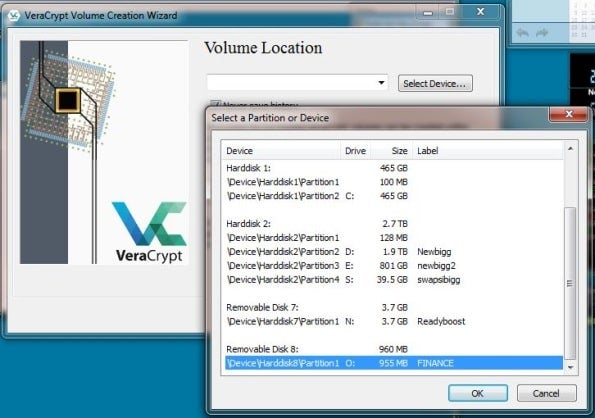

#HOW TO USE VERACRYPT USB DRIVE PASSWORD#
To mount the hidden volume, run veracrypt command as shown above but this time, use the password defined for the hidden volume. To unmount the volume, # veracrypt -d /dev/sdb1 Mounting the hidden volume # veracrypt -lġ: /dev/sdb1 /dev/mapper/veracrypt1 /mnt/sdb1 To mount a volume prompting only for its password: # veracrypt -t -k "" -pim=0 -protect-hidden=no /dev/sdb1 /mnt/sdb1/

:max_bytes(150000):strip_icc()/002-how-to-encrypt-a-flash-drive-4628341-deffb596b4b54fbc946bcb999d4d7408.jpg)
Protect hidden volume (if any)? (y=Yes/n=No) : Enter # veracrypt /dev/sdb1 /mnt/sdb1/Įnter password for /dev/sdb1: STRONGPASSWORD When prompted for a password, use the password set for the outer volume above. To mount the outer volume, run the command below. Once you are done creating the volumes, you can now mount them and write your files or data to them as you wish. To create a hidden volume in non-interactive mode, run the command below # veracrypt -t -c -volume-type=hidden /dev/sdb2 -size=500M -encryption=aes -hash=sha-512 -filesystem=ext4 -p -pim=0 -k "" -random-source=/dev/urandom Mount the Volumes OTHERWISE, YOU MAY OVERWRITE AND DAMAGE THE HIDDEN VOLUME!
#HOW TO USE VERACRYPT USB DRIVE HOW TO#
WARNING: IF YOU DO NOT PROTECT THE HIDDEN VOLUME (FOR INFORMATION ON HOW TO DO SO, REFER TO THE SECTION "PROTECTION OF HIDDEN VOLUMES AGAINST DAMAGE" IN THE VERACRYPT USER'S GUIDE), DO NOT WRITE TO THE OUTER VOLUME. If all the instructions have been followed and if the precautions and requirements listed in the section "Security Requirements and Precautions Pertaining to Hidden Volumes" in the VeraCrypt User's Guide are followed, it should be impossible to prove that the hidden volume exists, even when the outer volume is mounted. The hidden VeraCrypt volume has been successfully created and is ready for use. Please type at least 320 randomly chosen characters and then press Enter: If all is well, then your hidden volume should be successfully created. Re-enter password: STRONGPASSWORDFORHIDDENVOLUME Įnter password: STRONGPASSWORDFORHIDDENVOLUME Set a different Password for hidden volume. Enter volume path: /dev/sdb1Įnter hidden volume size (sizeK/size/sizeG): 500M

So repeat the above procedure but this time round Once the outer volume is created, you need to create the hidden volume within it. To create the outer volume in non-interactive mode, run the command below # veracrypt -t -c -volume-type=normal /dev/sdb1 -encryption=aes -hash=sha-512 -filesystem=ext4 -p -pim=0 -k "" -random-source=/dev/urandom Create a hidden volume within the outer volume The VeraCrypt volume has been successfully created. In this case, you are required to enter at least 320 random numbers. Next, type random numbers that can be use to improve the cryptographic strength of the encryption key. Re-enter password: Re-Enter STRONGPASSWORD For PIM and keyfile path, press enter to set empty values. Next, you need to set the password for encrypting outer volume. In this case, we are going with Linux Ext4. You can also just press enter to accept the defaults.ĭefine the filesystem to format the volume with. In the above, we chose the AES and SHA 512 as encryption and hashing algorithms respectively. Next, define the Encryption as well as the hashing algorithms Encryption Algorithm: In this case, we are going to setup a Normal volume. When you run the command, you are prompted to choose the type of volume. Most of the options will be requested if you don’t specify them on the command line and thus the setup becomes interactive. Launch veracrypt command from the terminal and pass option -c/–create and of course the -t/–text option. To create a hidden VeraCrypt volume, step through the following procedure. To learn more about VeraCrypt command line options, run veracrypt -h Use VeraCrypt on Command Line to Encrypt Drives Create a Hidden VeraCrypt Volume


 0 kommentar(er)
0 kommentar(er)
